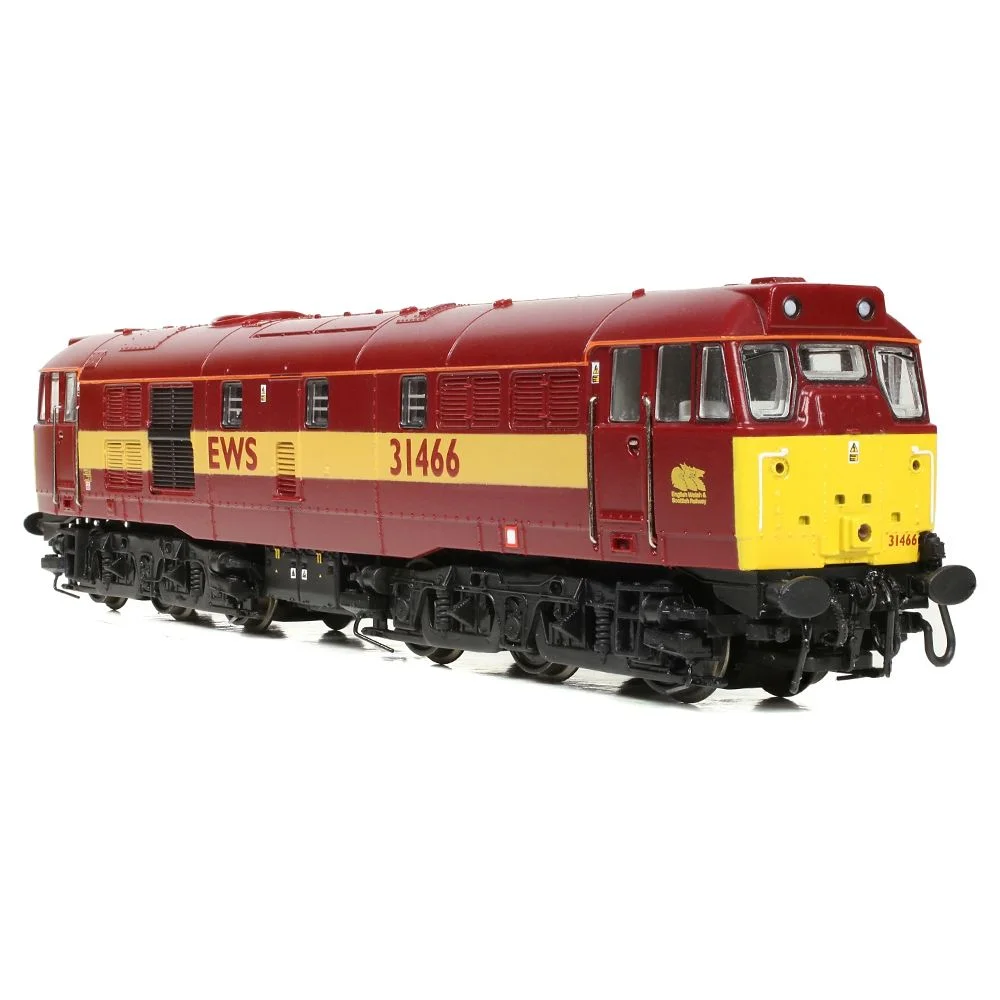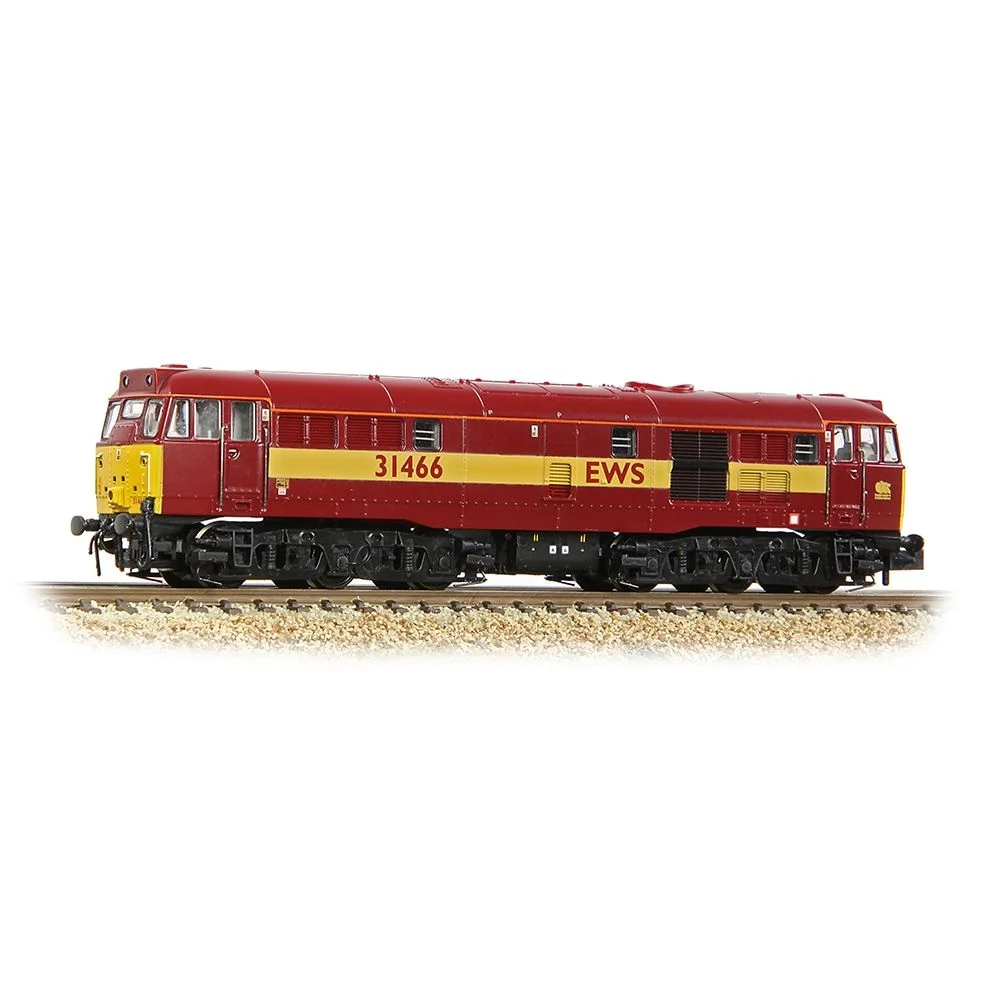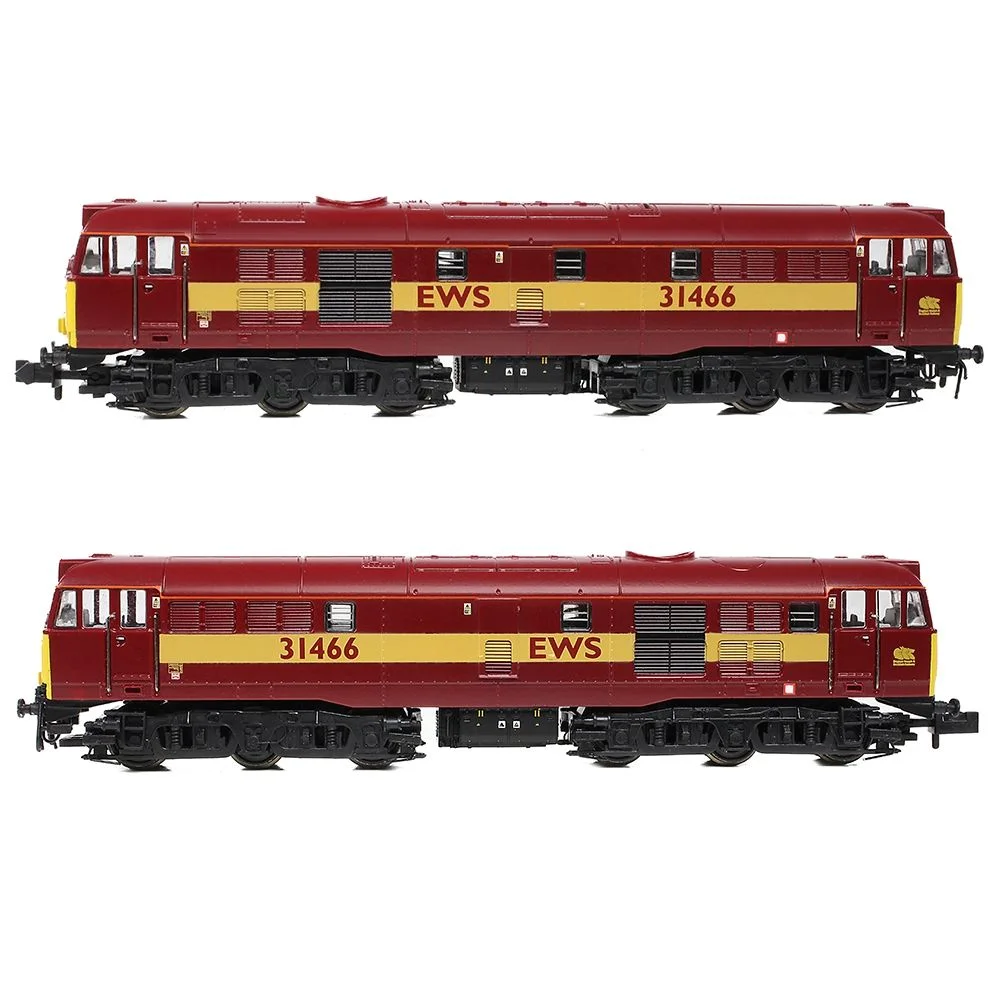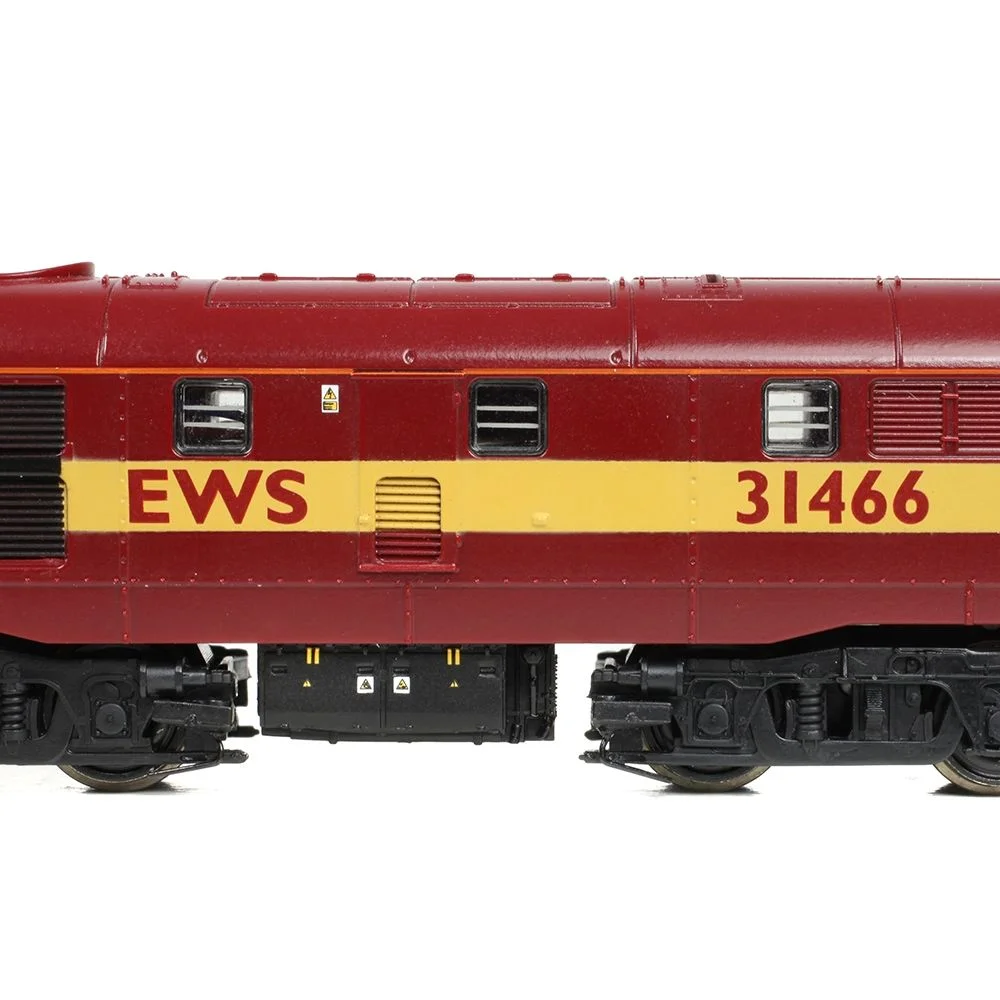Graham Farish 371-137SD
British Rail Class 31 31466 English, Welsh & Scottish Railway Maroon & Gold
Class & Prototype
- Class: British Rail Class 31
- Traction: Diesel
- Transmission: Electric
- Built: 1957-1962
- Total Built: 263
- Running Number: 31466
The Brush Type 2 represents one of British Railways' most remarkable transformation stories. Built by Brush Traction between 1957-1962, these 263 A1A-A1A diesel-electric locomotives initially struggled with unreliable Mirrlees engines, earning TOPS classification as Class 30. The comprehensive re-engining programme of 1964-1969 replaced the problematic powerplants with proven English Electric 12SVT engines, transforming them into dependable Class 31 locomotives that served for over 50 years. Originally nicknamed "Toffee Apples" (pilot batch) and "Skinheads" (early production), they evolved from operational liability to versatile workhorse, handling everything from branch line passenger services to main line freight duties. The class demonstrates how systematic engineering solutions can rescue unsuccessful designs, with the final locomotive withdrawn in 2017 after six decades of service. Today, 36 examples survive in preservation, whilst excellent ready-to-run models from Accurascale, Hornby, and Bachmann enable authentic recreation of both Class 30 and Class 31 configurations across multiple scales and eras.
Operator & Livery
- Operator: English, Welsh & Scottish Railway
- Livery: Maroon & Gold
- Era: 9 - Privatisation
The English, Welsh & Scottish Railway (EWS) operated Britain's largest rail freight network from 1996-2007, controlling 90% of the UK freight market. Formed by Wisconsin Central through acquisition of five British Rail freight companies, EWS revolutionised British freight transport with 250 new General Motors Class 66 locomotives and distinctive maroon and gold livery featuring the famous "three beasties" logo. The company was acquired by Deutsche Bahn in 2007, eventually becoming today's DB Cargo UK while maintaining its freight market dominance.
The EWS maroon and gold livery was introduced in April 1996, with the first locomotive to receive the scheme being Class 37 number 37057, which emerged from Toton Depot on 25 April 1996 to coincide with the launch of the English, Welsh & Scottish brand. The colour specification featured maroon bodysides, roofs and ends with black underframes and buffer beams, standard UK yellow warning panels, and a distinctive gold stripe running centrally between the cab ends.
To ensure accurate colour consistency, a sample plate was flown from Wisconsin Central's American operations to Britain, where British paints were mixed to match this standard. Interestingly, when Class 66 and 67 locomotives were later built by General Motors, another sample plate was sent to the manufacturer, resulting in a slightly lighter shade than the original British mix.
The livery evolved through several variations. Early applications from April 1996 featured "EW&S" lettering (including the ampersand) in Arial typeface within the gold band. From January 1997, this was simplified to "EWS" with improved Gill Sans typeface - continuing a tradition established by the LNER in the 1920s and used by British Railways until the 1960s.
The gold band width varied by locomotive class - most received 600mm bands, but Classes 37, 58, and 73 looked better with 550mm bands due to their distinctive body shapes. Company lettering and locomotive numbers appeared in maroon within the gold stripe with 20mm clearance from the band edges, positioned at opposite ends on each side of the locomotive.
For model railway enthusiasts, specialist paint manufacturers like Phoenix Paints produce authentic colour matches, with their E.W.&S. Red (P193) and E.W.&S. Gold (P194) paints matched to original Wisconsin Central colour panels. Alternative options include RailMatch EWS Maroon (1255) which many modellers prefer for value and colour accuracy.
The EWS maroon and gold scheme became one of the most recognisable railway liveries in modern British history, remaining in use until Deutsche Bahn's acquisition in 2007 and the subsequent adoption of DB Schenker corporate red livery from 2009.



